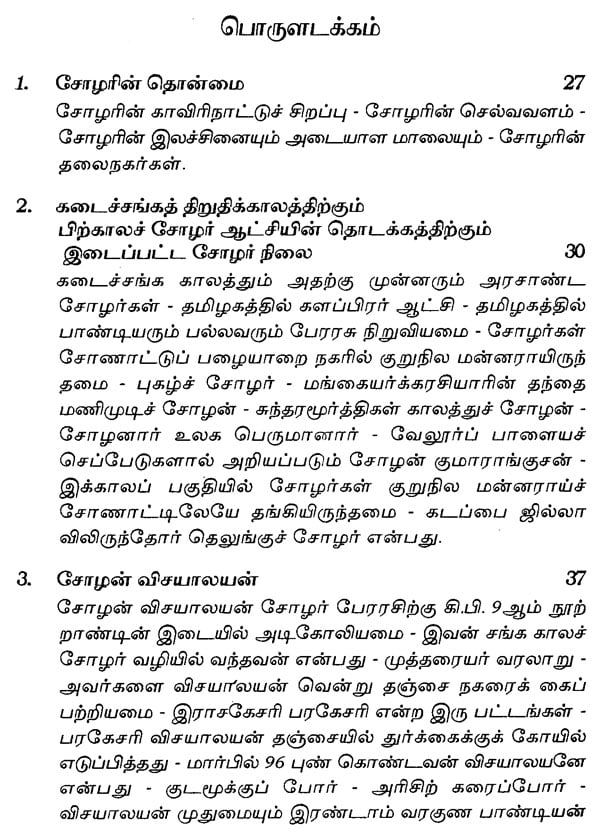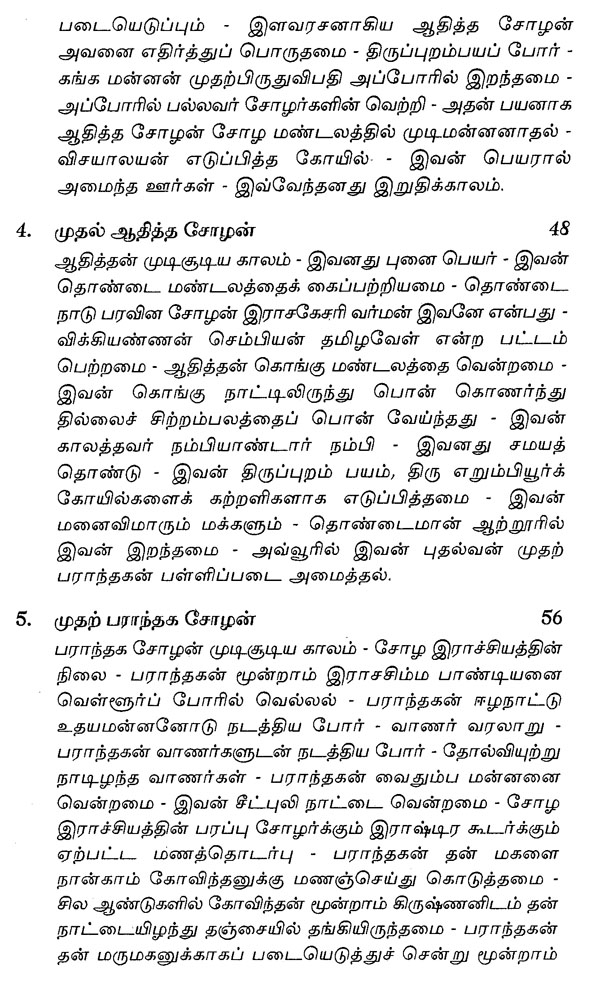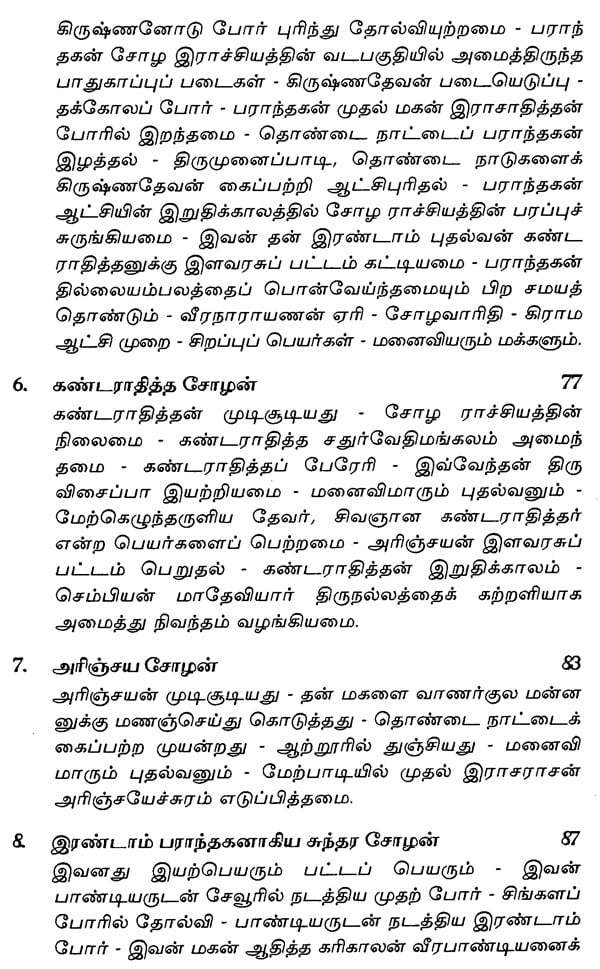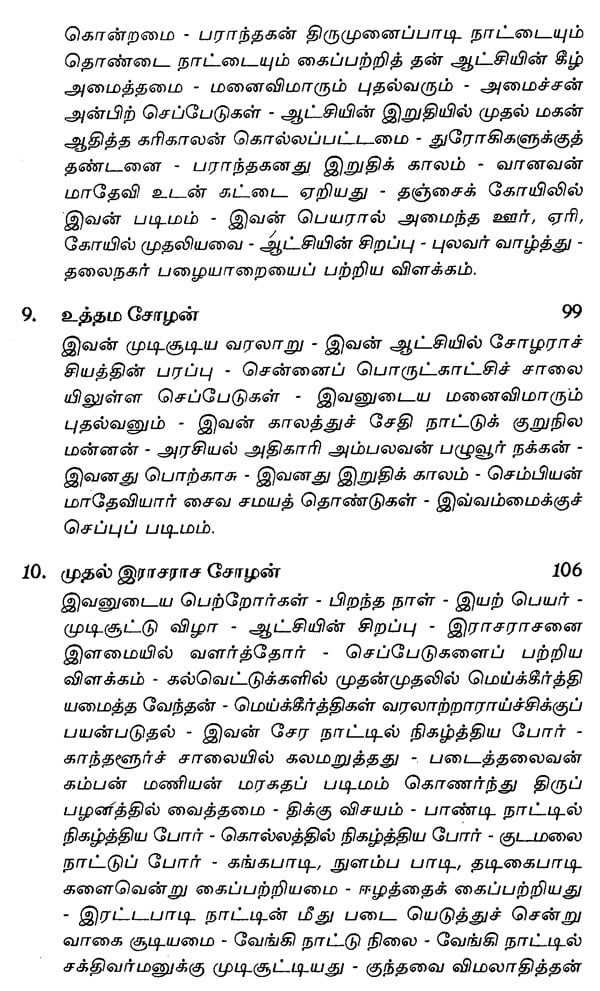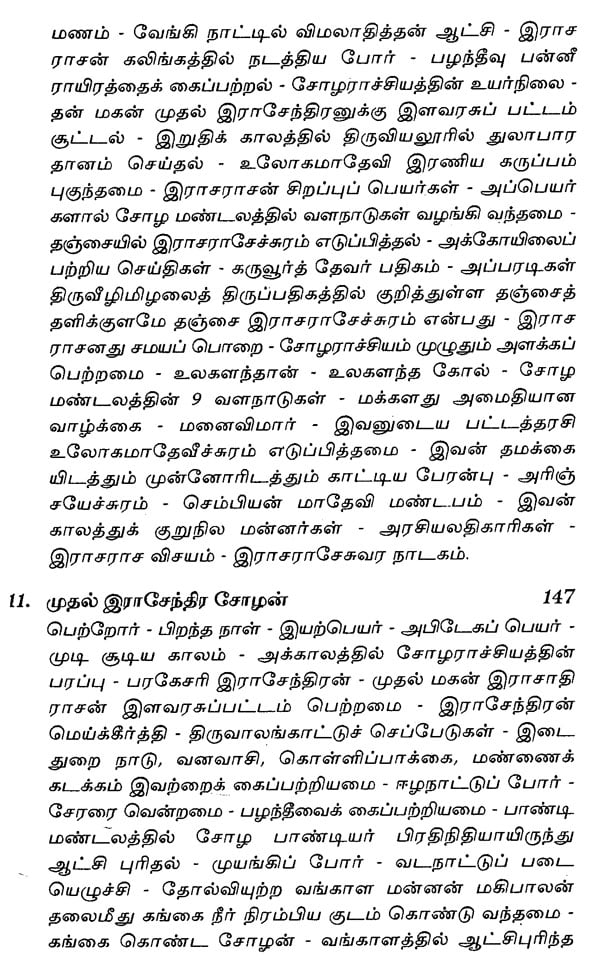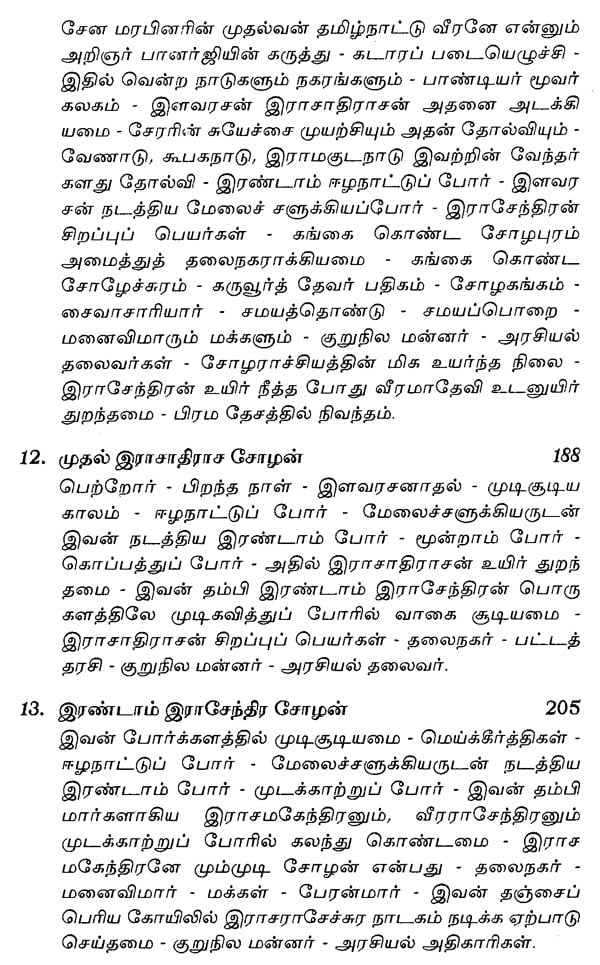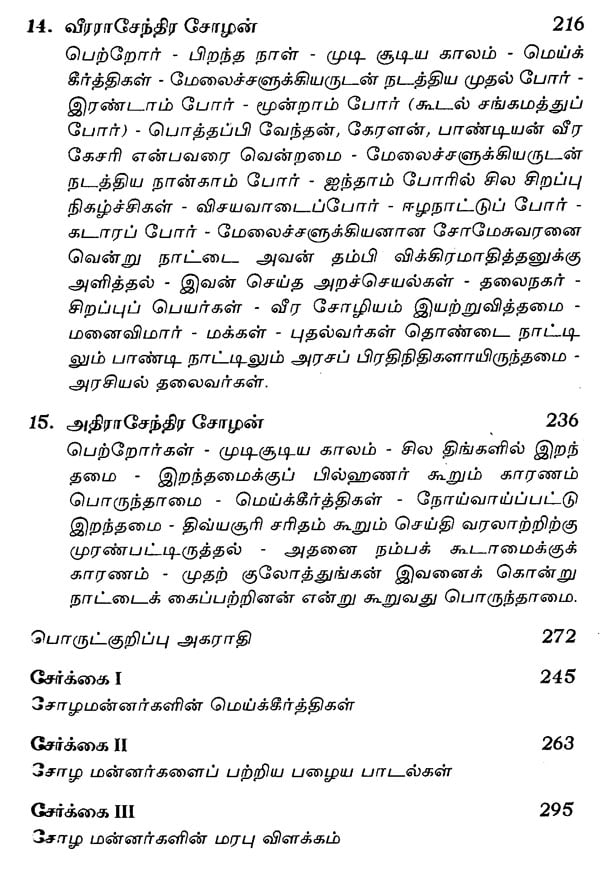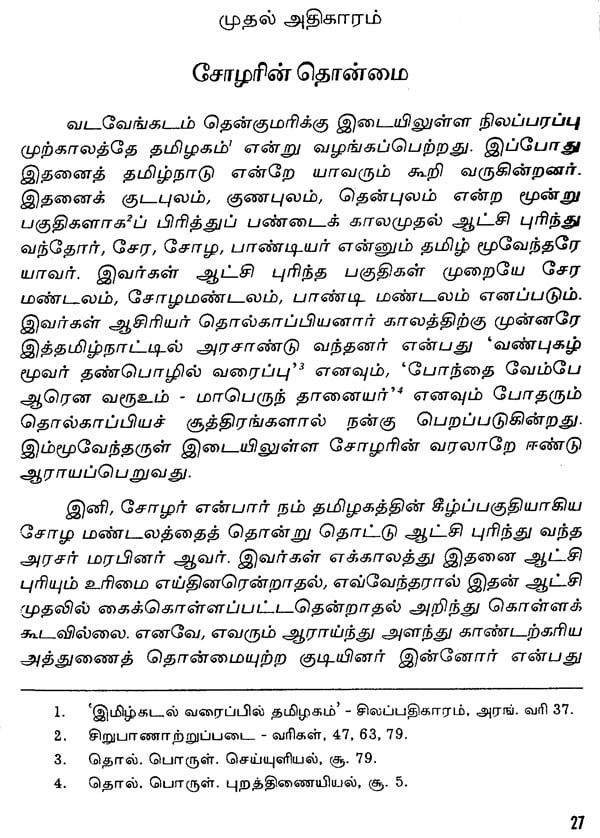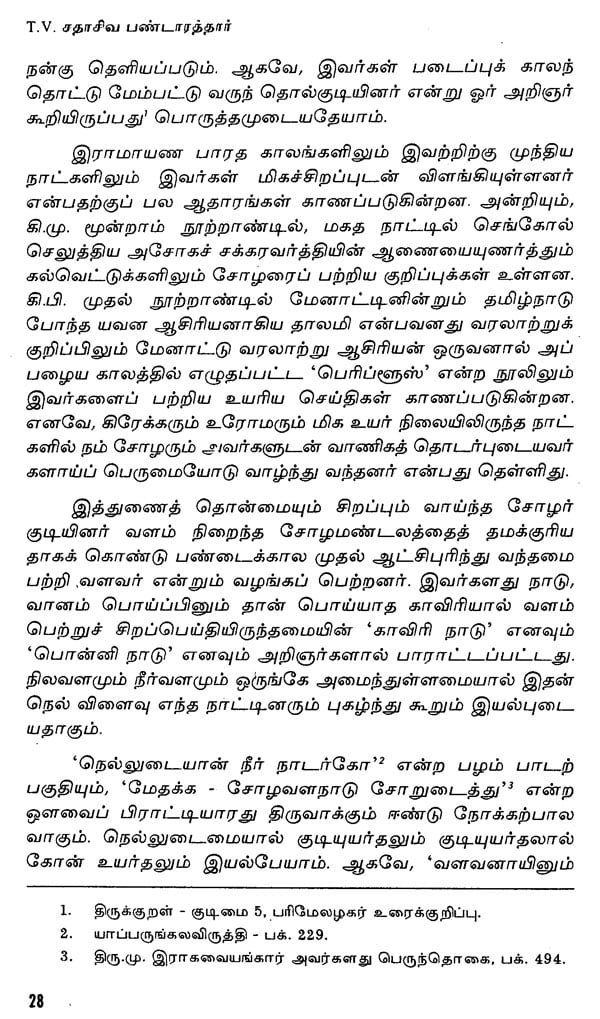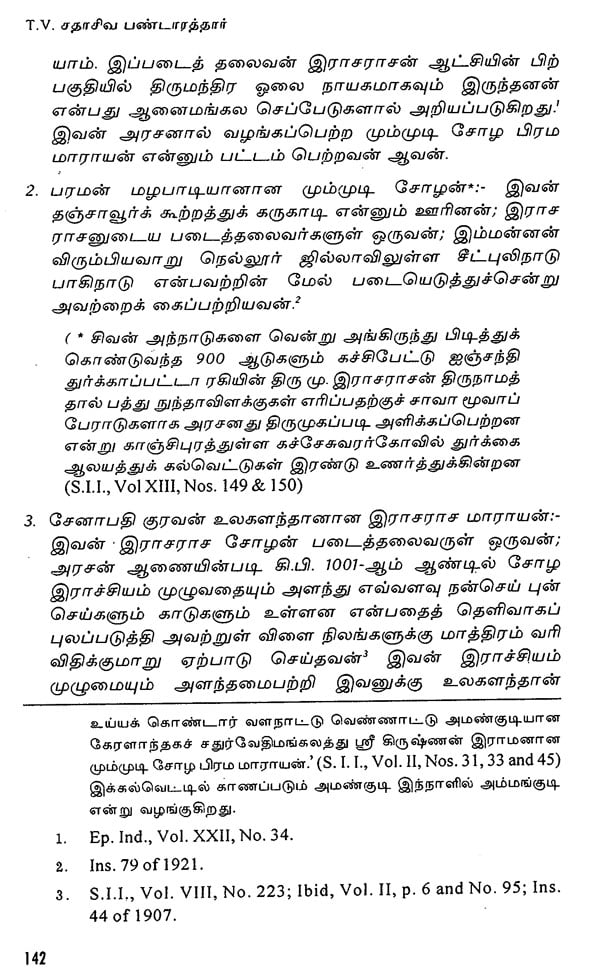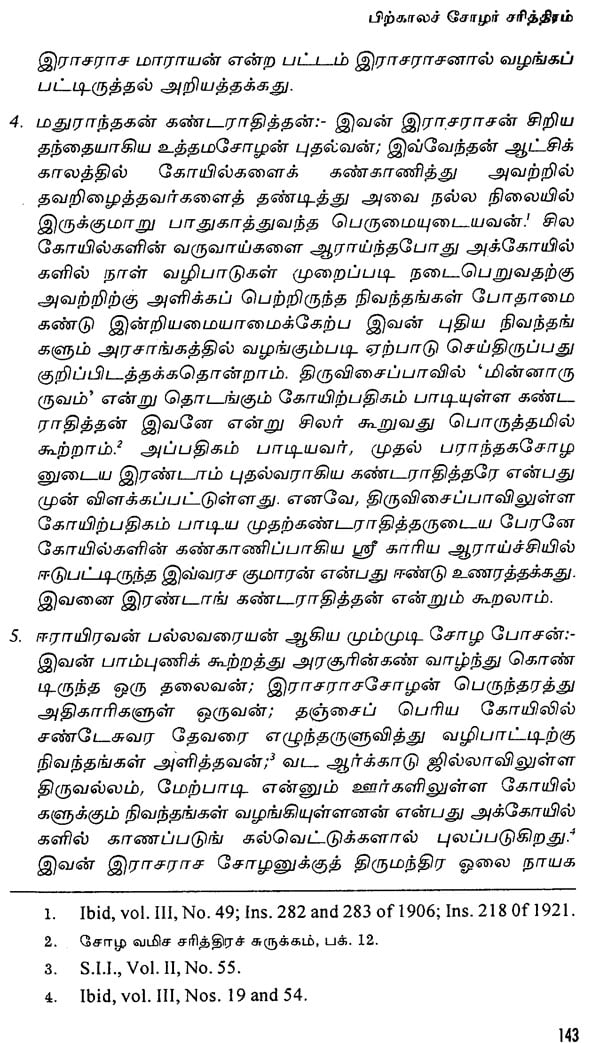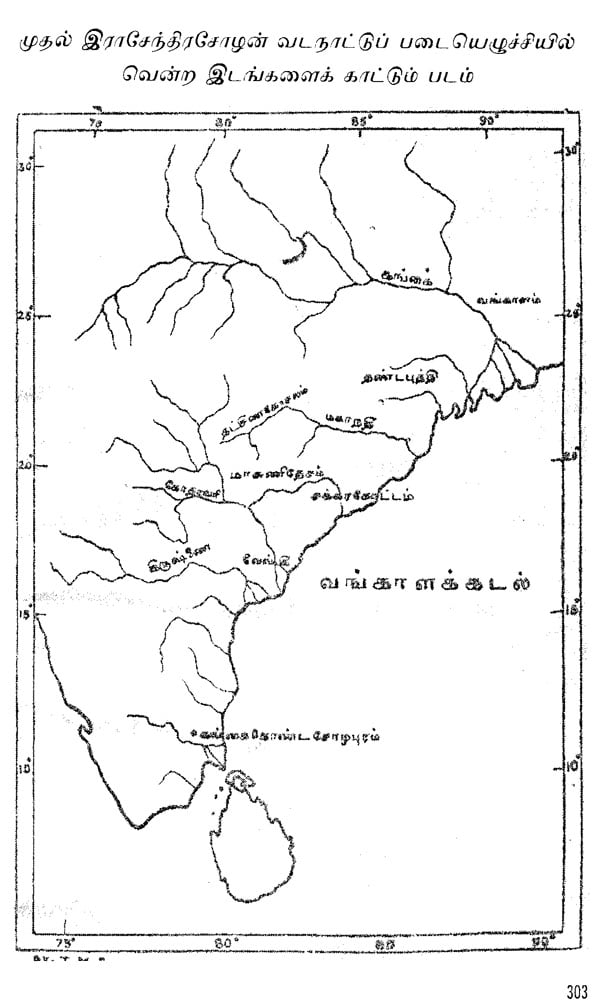
Medieval History of Chola Kings Part-1 (Tamil)
Book Specification
| Item Code: | NAW503 |
| Author: | T.V. Sadasiva Pandarathar |
| Publisher: | Amudha Nilayam, Chennai |
| Language: | Tamil and English |
| Edition: | 2004 |
| Pages: | 303 (8 B/W Illustration) |
| Cover: | PAPERBACK |
| Other Details | 8.50 X 5.50 inch |
| Weight | 270 gm |
Book Description
1944-46: Those were the years when this book was taking its final shape. I can never forget those happy years of my stay at the Annamalai University as the Professor of Tamil though it was a parenthesis in my life. The Tamil Department in that Tamil University in the present context has to be the meeting point of the past and the present, as well as of the East and the West. It has to look backward to the classical Tamil of the Sangham and the Medieval periods, with all its literary, historical and philosophical implications and forward to the Tamil of the future as the proper and powerful vehicle of all modern knowledge with all its scientific implications. This living contact with all the other Department of the University has become all the more necessary, thanks to the regional language trying to become the medium of instruction. The History Department was the first to develop this contact; South Indian History occupies even now an important place in the Tamil Honours Course. Therefore there is no wonder in the Tamil Department giving to the world a work on History.
A picture of the Tamil Land and its varied and variegated aspects of life through the ages, has yet to be painted. Tamil Literature is a valuable mine of knowledge for any research student of History, Philosophy or Literature. The Tamil Department has to undertake amongst others inclusive of philosophical research this Historical research. An authoritative history of the Tamil country is what every Tamiiian longs for, especially after the dawn of Freedom in our land. Tamil Literature and Tamil Inscriptions so carefully studied in this Department still remain the source of such a history.
There are according to the author a few mistaken ideas prevalent which he has attempted to correct. Parantaka I built a temple on the remains of his father Aditta at Tondaiman Arrur near Kalathi in the Chittoor District. Prof. Nilakanta Sastri states that Parantaka made there provision for the feeding of 1000 Brahmins. Chittoor of some commercial importance was the rendezvous of all kinds of people and the Professor's statement may mislead one to think that the King had not cared for others. Tiru. Pandarattar in this book points out with the help of the inscription, the catholicity of Parantaka in providing not only for 300 Brahmins, but for 200 followers of the six sects and 500 people of other sects, holding thus the scale even amidst those warring sects. The next point is about the murder of Aditta Karikalan which is often surmised to have been engineered by Uttama Cola. Our author points out that this conclusion is incompatible with the subsequent behaviour of the members of the Cola family and suggests that this murder was brought about by a conspiracy of the high officials of the state. He tries to prove further that Rajamahendra was the elder brother of Vira Rajendra and the younger brother of Rajendra II and not the latter's son as assumed by some. He also attempts to disprove the theory of Prof. Nilakanta Sastri that Adhi Rajendra was killed in a rebellion organised against him by the oppressed Vaishnavites.
Even if the author's conclusions are not all decisive he has certainly given the research scholars enough food for further thought. Probably this is the first original work of this kind in Tamil distinguished from mere text books and the author and the Annamalai University deserve to be congratulated on the production of this monumental work in chaste and lucid Tamil.
Having had something to do with the book I am personally glad that this book is seeing the light of the day at least now. I deem it a great privilege to introduce, at the instance of the au-thor, with these few words the valuable work to the Tamil world with heartfelt thanks to the author and the University.
**Contents and Sample Pages**
